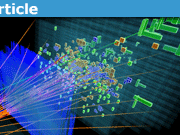Why You Can’t Quantum Tunnel Through a Wall
Table of Contents
What is quantum tunneling
Quantum tunneling is a phenomenon in quantum mechanics where particles exhibit the ability to pass through energy barriers that would be insurmountable in classical physics. It occurs when particles, such as electrons, exhibit wave-like behavior and are described by the principles of quantum mechanics. Quantum tunneling challenges our classical intuition and plays a significant role in various areas of physics and technology. Here are some key aspects of quantum tunneling:
- Wave-Particle Duality: In quantum mechanics, particles such as electrons exhibit both particle-like and wave-like properties. This duality means that particles are not confined to classical trajectories but can spread out as waves.
- Energy Barriers: In classical physics, particles cannot penetrate energy barriers higher than their kinetic energy. However, in quantum mechanics, particles have a probability of tunneling through such barriers, even if their energy is lower than the barrier height.
- Tunneling Probability: The probability of tunneling depends on the thickness and height of the barrier, as well as the energy of the particle. Particles have a higher probability of tunneling through thinner and lower barriers.
- Applications: Quantum tunneling has important applications in various fields. It is essential in the operation of semiconductor devices, such as transistors and tunnel diodes. It is also a fundamental concept in understanding nuclear fusion processes in stars and the behavior of particles in quantum dots.
- Scanning Tunneling Microscopy (STM): STM is a powerful tool in nanoscience and allows scientists to image surfaces at the atomic scale. It relies on the tunneling of electrons between a sharp metal tip and a surface.
- Quantum Mechanical Effects: Quantum tunneling is a quantum mechanical effect that challenges classical physics. It can explain phenomena such as alpha decay in nuclear physics and the behavior of particles in quantum confinement.
- Uncertainty Principle: The Heisenberg Uncertainty Principle is related to quantum tunneling. It states that one cannot precisely know both the position and momentum of a particle simultaneously. This uncertainty leads to the probability of tunneling.
Quantum tunneling is a remarkable and counterintuitive phenomenon that arises due to the wave-like behavior of particles at the quantum level. It has wide-ranging implications in the behavior of particles and the operation of various technologies, particularly in the realm of nanotechnology and quantum electronics.
Can You Quantum Tunnel Through a Wall?
The short and sweet answer if a tennis ball, a bowling ball, or any other kind of ordinary macroscopic object can tunnel through a wall is NO. You can’t quantum tunnel through a wall.
We periodically get questions on PF about people wanting to know if a tennis ball, a ping pong ball, a person, a cow, etc. can tunnel through a wall, or fall through the ground. This is due to an aspect or a consequence of quantum mechanics in which quantum particles have the probability of tunneling through a potential barrier and come out on the other side of it.
This is a very good time for a lot of people, especially those who did not learn physics (or have not learned physics) formally, to make the realization that physics isn’t just “What goes up, must come down”. Physics is also “Where and when it comes down”. This means that physics isn’t just a qualitative description of something, it also contains a quantitative description of that something. There must be calculational numbers that come out that we can compare and verify with experiments.
To apply to this case. It isn’t just sufficient to indicate that there’s a possibility that tunneling of something is “possible”. One must also calculate the probability of that occurring. This is where the magnitude of it happening makes a huge difference. If the probability is extremely small, so much so that the chances of it occurring are negligible within the age of the earth or the universe, then call me crazy, but I’d say that it doesn’t occur! So when dealing with something like this, one has to consider both parts: the phenomenon is valid, and the quantitative aspect of it.
I did my Ph.D. work in tunneling spectroscopy in High-Tc superconductors. All I can say is that, throughout the 3 years of my experimental work, I WISHED it would occur as easily as people seem to make it! And I was doing tunneling by electrons, which is not a composite particle. In considering the tunneling of composite objects (objects made of more than one fundamental particle), there are extra complications that are not present when dealing with the tunneling of fundamental particles. Let me explain.
In electron tunneling, for example, the electron itself can already be described via the straight-forward wave function. And all we care about is the probability of that single electron tunneling across the potential barrier. However, when you have a composite particle, say an H2 molecule, for that to tunneling across, the whole molecule must tunnel across together! Think about it for a second. The molecule consists of 2 protons and 2 electrons. Already, due to their different charges, they see different potential barriers. If you set up a potential barrier to the electrons, the protons see this as being a potential well! It is almost impossible to set up one barrier that is uniform and identical to both the electrons and protons. What this results in is that the probability of tunneling for the protons and electrons will be very different from each other! Different parts of the molecule have different tunneling probability and different chances of coming out on the other side of the barrier. Essentially, this makes it very difficult to imagine the whole entity making it through together! This extra factor is not present in the tunneling of a fundamental particle.
Not only that, there is another issue at hand. When we try to detect quantum effects of larger objects, such as buckyball, etc., the most important characteristic that the system must have is that the entire entity (buckyball, 10^11 electrons, etc.) must be in a coherent state with each other. Having such phase coherence is one of the most fundamental aspects of a quantum property. This is why in experiments done on buckyball interference, the molecule had to be cooled down and isolated until all parts of the buckyball are in coherence with each other. It wasn’t easy to detect quantum state at this scale, and one had to go through a lot of crazy gymnastics for that to occur. And this is to do something “simpler”, i.e. 2-slit interference. Think of how much more difficult it is to make that buckyball tunnel through a potential barrier, consider the extra difficulty factor that I mentioned above.
Conclusion
This is why many of us in physics shake our heads when someone outside of physics only understands a phenomenon or a principle superficially, and then decides to extrapolate it into other areas. The Deepak Chopras of the world often likes to justify and validate many of their pseudo-scientific beliefs by invoking the “mystical” consequences of quantum mechanics. They do this without any kind of a quantitative understanding of quantum mechanics, and thus, are completely clueless to the scale of such events, and whether such things are well-defined and likely to occur.
PhD Physics
Accelerator physics, photocathodes, field-enhancement. tunneling spectroscopy, superconductivity








Just to be clear… my reference to Lloyd was not intended as a favorable one.
As ZapperZ says, the answer should be: it doesn't happen. He has shown why an H2 molecule will not ever tunnel through a wall in any universe. I think it is clear that anything larger won't either. Saying it is theoretically possible is meaningless in this context.
Now what are your chances of being $500 richer? :-pDead certain in the world in which I pick gold.
Lloyd was onto something. In MWI, it's not a stupendously low probability, it's a dead certainty. In some worlds.No, that simply moves the probability downstream in a … philosophically whimsical way. It is simply a stupendously low probability for any of the Worlds that it happens in, to be the one you're in.
I put one thousand small boxes in front of you. In one of those boxes is $500. You have a 1:1000 chance of being $500 richer. Yay.
-or-
I put one thousand boxes in front of you. In one of the boxes I put a gold envelope. In the other 999, I put a white envelope.
Inside the gold envelope I put $500, while the white envelopes are empty. If you get the gold envelope, you are 100% guaranteed of getting $500.
Now what are your chances of being $500 richer? :-p
“jeffery_winkle said: ↑
Aside from the stupendously low probability for this happening, …So you’re telling me there’s a chance!” — Lloyd (from "Dumb and Dumber", a documentary on trends in modern physics)Lloyd was onto something. In MWI, it's not a stupendously low probability, it's a dead certainty. In some worlds.
My point exactly. Zapper, any comment on this point?No, because I have no idea what that meant.
Are you still questioning this even when I actually showed experimental evidence?
Zz.
ZapperZ's argument seems very compelling at first sight – if, say, the neutrons, tunnel much faster than the protons, then the chances of everything arriving at the same time are remote. I believe that the argument is actually incorrect different particle types are taken care of in the calculation of P0 so what ZapperZ has illustrated is not that the probability of a successful tunnel is reduced by there being different types of particle but that most of the failures will show splinching because of the different types of particle.My point exactly. Zapper, any comment on this point?
Aside from the stupendously low probability for this happening, …“So you’re telling me there’s a chance!” — Lloyd (from "Dumb and Dumber", a documentary on trends in modern physics)
I hope someone actually addresses the question before the thread gets closed!@ZapperZ has just posted about the supreme importance of the coupling or entanglement of the particles, but initially we were using a toy model in which the tunneling events are independent. With fragile entanglements one might have to dig quite deep into the physics to discover whether a) we need to keep the coherence or b) whether in fact it doesn't matter as the experiment just turns the superposition into a mixture in the same way that the environment does all the time. That might be worth a separate discussion.
Staying with the toy model, the composite probability is, practically by definition, the product of the individual probabilities. To define the probability properly we need to decide what time frame we allow ourselves. Presumably we don't want to experience too much of a lurch as we walk through the wall, so let us say t[SUB]0[/SUB] ~ 1 second. For simplicity I take this as the baseline probability P[SUB]0[/SUB] – the probability of all the particles tunneling within t[SUB]0[/SUB] seconds. But if you want all the particles to arrive "at the same time" so that you don't instantly dissipate, you are probably talking about times that are short on the scale of your own Plank period, leaving a time frame t[SUB]1[/SUB]~ 10[SUP]-40[/SUP]seconds. A little thought shows that the probability P[SUB]1[/SUB] is then (t[SUB]1[/SUB]/t[SUB]0[/SUB])[SUP](N-1)[/SUP]P[SUB]0[/SUB] where N is the number of particles. This way P[SUB]1[/SUB]/P[SUB]0[/SUB] just depends on how many particles there are, not on the number of types as they have already been accounted for in the calculation of P[SUB]0[/SUB].
Finally, a totally different calculation is needed if the experiment is left to run until you have completely tunneled. ZapparZ's scenarios of splinching his left hand assumes that he is through the wall. So in these cases, the probability is defined to be unity. However, the task of calculating the probability of arriving intact is rather different. I *think* one would have to use a different time slot for P[SUB]0[/SUB], not ~ one second, but the typical tunneling time for all the particles, say T[SUB]3[/SUB] seconds (so that T[SUB]3[/SUB].P[SUB]0[/SUB] = t[SUB]0[/SUB]) Then the factor of t[SUB]0[/SUB]/t[SUB]1[/SUB] ~ 10[SUP]40[/SUP] becomes t[SUB]3[/SUB]/t[SUB]1[/SUB] and once again the probability does not depend on there being different types of particle.
However ZapperZ's argument seems very compelling at first sight – if, say, the neutrons tunnel much faster than the protons, then the chances of everything arriving at the same time are remote. I believe that the argument is actually incorrect: different particle types are taken care of in the calculation of P[SUB]0[/SUB] so what ZapperZ has illustrated is not that the probability of a successful tunnel is reduced by there being different types of particle but that most of the failures will show splinching because of the different types of particle.
Since I'm an experimentalist (and I was trained in tunneling spectroscopy measurement), I'll show you evidence on why single electron tunneling is much more prevalent (and thus, easier and significantly more probable) than a coherent 2-electron tunneling.
This manuscript (it was published in PRB) shows superconductor-insulator-normal metal (SIN) and superconductor-insulator-superconductor (SIS) tunneling spectroscopy. Pay attention to Fig 4 (near the end of the manuscript on Pg. 13).
http://arxiv.org/pdf/cond-mat/9807389.pdf
These are IV curves (current versus applied voltage across the tunnel junction) for SIS tunneling. The current that you see is dominated by single-electron tunneling. This is where the the Cooper pairs break apart, and single-electrons tunnel through the insulating layer, and then reforming Cooper pairs again on the other side. This is true EXCEPT for the zero-bias region. If you notice, there is a small signal in the current when there's no applied voltage, and no single-electron tunneling. This is the Josephson current, where it is a tunneling of the supercurrent consisting of the coherent Cooper pairs!
But look at the "constraints" here. The current is exceedingly small when compared to the single-electron tunnel current, and it is destroyed once one applies even a small bias to the junction. As someone who had measured and dealt with this current, it is EXTREMELY FINICKY, and can be destroyed very easily! In fact, if the tunnel barrier gets bigger, there is a point where I only observed single-electron tunneling, and not the Josephson current any longer. The Josephson current is extremely sensitive to "phase change", which is why it makes for a very sensitive detector in SQUIDs.
So in this set of measurements, there is a significant and distinct difference in the probability of single-electron tunneling versus 2-electron tunneling, over the same, indentical tunnel barrier! The single-electron tunneling is clearly more probable. In fact, as long as your barrier remains intact, you can crank up the bias potential as high as you want and get more and more tunnel current, while the 2-electron tunnel current is gone!
There are NUMEROUS complications and additional parameters when we deal with coherent tunneling of "composite" particles that are not described in the simple tunneling picture done in undergraduate QM classes. For example, we haven't even discussed the content of the tunneling matrix element which will be relevent as the complexity arises. I simply did not want this to go over the heads of people who haven't even done undergraduate QM classes, but I wanted to point out that many people who talk about macroscopic objects tunneling through a barrier are ignoring the FACT that composite particle/macroscopic object tunneling is extremely different and extremely complicated with compared to single-particle tunneling. The former has a lot more physics that must be considered, and it is not a simple one-to-one correspondence to the latter. The knowledge of single-particle tunneling does not translates as smoothly as one thinks when dealing with composite/macroscopic particles.
Zz.
:headbang:Lol… :oldbiggrin:
Why yes, yes I can… Heisenberg compensators remove uncertainty from the subatomic measurements… further technology involved, includes computer pattern buffers to enable degrees of leeway in the processes. Does that make everything right ? … :oldeyes:… :oldgrumpy:No. You still have to get through the wall. :headbang:
There is way too much fapping going on in this thread.
You may want them to retain their configuration too, making it even less likely, as even a small error here can have serious consequences.
Okay, we have a bona fide disagreement here! Can anyone settle this?Why yes, yes I can…
Heisenberg compensators remove uncertainty from the subatomic measurements… further technology involved, includes computer pattern buffers to enable degrees of leeway in the processes.
Does that make everything right ? … :oldeyes:… :oldgrumpy:
What 'usual' way?In this toy model, the tunneling events are independent. So you multiply the probabilities together.
But you know this, so what are you getting at?
No disagreement. If you don't mind going through the wall in little bits then combine the probabilities in the usual way.What 'usual' way?
Okay, we have a bona fide disagreement here! Can anyone settle this?No disagreement. If you don't mind going through the wall in little bits then combine the probabilities in the usual way. If you would prefer to get through in one piece, then the particles all need to tunnel together, which is a much lower probability. You may want them to retain their configuration too, making it even less likely, as even a small error here can have serious consequences.
https://paulfny.files.wordpress.com/2014/04/9d28b-insodeoutbaboon.jpg?w=400&h=217 [Broken]
I don't think the probability of electron + proton is necessarily less than either proton + proton or electron + electron. My guess is that it depends on the type of barrier.
Because they won't get through the barrier with equal probability! Your right hand might go through, but your left hand stayed behind!Okay, we have a bona fide disagreement here! Can anyone settle this?
Let's say you have a bound state of two fundamental particles, say a positronium, which is a bound state of an electron and positron. Let's say, it is passing through the event horizon of a black hole. Well, one particle has to pass through first. So, then you have an electron inside the event horizon, and a positron outside the event horizon. Obviously, they can no longer be bound together when they are on opposite sides of the event horizon…The physics of black holes is certainly beyond my expertise, but I don't think that's quite right. You can set up an approximate local inertial coordinate system in the vicinity of the electron-positron pair, and to first approximation, the metric looks the same as the Minkowski metric, and so the usual two-particle bound state wave function should be approximately correct for this coordinate system. So to first approximation, falling through the event horizon shouldn't do anything to the positronium. (I'm sure there are higher-order effects that will take into account the possibility of the electron falling through while the positron escapes capture…)
I attended the April 2000 APS Meeting at Long Beach, CA, and even though I already graduated, I went to a lunch for undergraduates. There was a girl undergraduate physics major there, and she was relating a conversation she had with her mother, where she was trying to convince her mother that you could walk right through a wall, without leaving a hole in the wall behind you, without being injured, without damaging the wall. Quoting herself, she was saying, "MOM!!! It's true!" After the girl told the story, all the physics undergraduates at this lunch all had a big laugh, basically laughing at this girl's mother.
Part of the problem is that in undergraduate classes, they frequently approximate macroscopic objects as point particles. For example, if they are calculating the Earth revolving around the Sun, they approximate the Earth as a point particle. Well, obviously, the Earth is not a point particle. If they are calculating the probability of something barrier tunneling, they also approximate it as a point particle, which might be sufficient for an electron but not for a person. There are more differences between a person and electron than simply the difference in mass.
Aside from the stupendously low probability for this happening, let's say all the subatomic particles in your body, successfully barrier tunnel through the barrier. There is no reason to assume that after that, they would all reform the exact same atomic and molecular bonds that they had before. Even if you do successfully tunnel through the barrier, in the process, you will be converted into a plasma of subatomic particles.
This is also relevant to the black hole information problem. Let's say you have a bound state of two fundamental particles, say a positronium, which is a bound state of an electron and positron. Let's say, it is passing through the event horizon of a black hole. Well, one particle has to pass through first. So, then you have an electron inside the event horizon, and a positron outside the event horizon. Obviously, they can no longer be bound together when they are on opposite sides of the event horizon. Then the positron passes through the event horizon. After that, there is no reason to assume they will reform the same bond they had before. And that's for the most simple example of a bound state of two particles. Now imagine, if a person, which contains complicated organic molecules such as DNA, were to pass through the event horizon of a black hole. They will be converted into a plasma of subatomic particles simply by passing through the event horizon of the black holes. Obviously, all of these subatomic particles are not going to spontaneously reassemble into DNA after they are on the other side of the event horizon. Simply by passing through the event horizon of a black hole, you will be converted into a plasma of subatomic particles.
This was implicit even in the earliest formulation of black holes going back to Schwarzchild, but nobody seemed to recognize it because they were so used to approximating things as point particles, especially in general relativity. However, recently, this idea was independently rediscovered as a solution to the black hole information problem, where it was called the "firewall". Even after the firewall solution to the black hole information problem was proposed, some critics complained that it contradicted the general relativity assumption that "nothing special happens at the event horizon".
I was sort of joking, but I don't see how one can say that any transition that doesn't violate a conservation law has rigorously zero probability, which is what I think you are saying about Harry Potter tunneling. Or maybe it's just a matter of definition–because of the phase differences, the event where Harry Potter is on one side of the wall one moment and on the other side another moment (and the wall remains unbroken) would not be considered "Harry Potter tunneling through the wall".No, I wasn't saying it is rigorously zero. I first argued that the phase difference made it rigorously zero because whatever emerges the other side is definitely not HP (maybe HP Sauce?) but then I noticed the re-coherence loophole. That's two independent FAPP zeros so I won't be buying shares in the Tunneling Transporter just yet :)
I hope someone actually addresses the question before the thread gets closed!I don't think the probability of electron + proton is necessarily less than either proton + proton or electron + electron. My guess is that it depends on the type of barrier.
Then the term FAPP is meaningless FAPP. Thanks for making that clear FAPP.I was sort of joking, but I don't see how one can say that any transition that doesn't violate a conservation law has rigorously zero probability, which is what I think you are saying about Harry Potter tunneling. Or maybe it's just a matter of definition–because of the phase differences, the event where Harry Potter is on one side of the wall one moment and on the other side another moment (and the wall remains unbroken) would not be considered "Harry Potter tunneling through the wall".
Well, FAPP, there is no difference between zero and zero FAPP.Then the term FAPP is meaningless FAPP. Thanks for making that clear FAPP.
if/why the probability for electron + proton is less than proton + proton or electron + electron?I hope someone actually addresses the question before the thread gets closed!
Does tunneling shift the phase of the wavefunction? Because if it does then the probability of Harry Potter running through the wall of Platform Nine and Three Quarters and retaining coherence (in this independent-particle toy model) would be precisely zero, not zero FAPP.Well, FAPP, there is no difference between zero and zero FAPP.
Does tunneling shift the phase of the wavefunction? Because if it does then the probability of Harry Potter running through the wall of Platform Nine and Three Quarters and retaining coherence (in this independent-particle toy model) would be precisely zero, not zero FAPP. His state would rotate in phase space and he would emerge with a rather different, and probably terminal, configuration on the other side.
Harry could, of course, be thinking about Humpty Dumpty. Where all the King's horses and all the King's men couldn't put Humpty together again, environmental decoherence would give Harry a sporting chance of being recohered – at least sufficiently so to survive. Harry of course can use his wand to impose superselection of favourable outcomes but the rest of us must calculate – as Harry Hill says "What are the chances of that happening?"
But I'm shooting in the dark here as I have a sneaking suspicion that tunneling does not impose a phase shift so we're back to maline's question. Or perhaps more usefully, we should ask can we treat a highly entangled system as a collection of independent particles? Why *does* a tunelling alpha particle stay in one piece? DaveC's answer may apply because of binding energy… So perhaps the scenario of Zapper splinching his left hand is not a viable one.
FAPP, of course.
sorry, I meant "less than for one particle".
yes, now you got my Q right.
@maline I wasn't trying to show that the probability was merely less than one. I was attempting to show why the probability of transmission of the electron is higher than the transmission probability of electron + proton. But I think I see your concern now. In the OP it was stressed that the reason it's tougher to have an H2 molecule tunnel is because the protons and electrons have different probabilities of transmission. I think you understood this as implying that if the protons and electrons had equal probabilities of transmission, they would be more likely to tunnel, and you want to know why. Is that correct?
Are you asking if/why the probability for electron + proton is less than proton + proton or electron + electron?Yes. I thought that was clear.
@maline, read post #17.Absolutely, the tunnelings of the two particles are not uncorrelated. That is why I didn't use formulas like X*Y from the beginning. But it remains true that in classical probability, the question of whether two different events (correlated or not) have the same probability has no bearing on the probability of them both happening.
Dang. Crossed onto page 2.
@maline, read post #17.
Does the differencebetween the proton & electron actually make the tunneling probability lower, or just much more difficult to calculate? if so, why?
Yes, I got all that from the start! But for the seventh time, how does the fact that the individual probabilities are different come into this?Are you asking if/why the probability for electron + proton is less than proton + proton or electron + electron?
Yes, I got all that from the start! But for the seventh time, how does the fact that the individual probabilities are different come into this?
I have no problem with the fact that the two individual transmission probabilities are different. But what does this have to do with the joint probability of both particles being transmitted?Because the condition for success is that you (all of you) pass through the wall. Otherwise, none of you does. You encounter an impassible barrier.
Think of a mesh bag full of dice. Shake the bag, and each die has an individual chance of falling out of the bag.
But imagine if all the dice were stuck together with strands of gooey gum. Now, no die can literally fall out of the bag onto the floor, and the entire glop of dice will never fall out of the bag no matter how long and how hard you shake it. The chance of the entire glop of dice falling through are virtually zero, because it is a the sum of all the individual chances, which is a very small number.
Sure, two particles tunneling is less probable than one! But Zapper's statement was that a hydrogen atom is less likely to tunnel than an alpha particle, because of the fact that the proton & electron have different individual transmission probabilities. In your terms, we're comparing X*Y vs Z*Z. With classical probability, it would be completely irrelevant whether X=Y or not. So why is this aspect important here?
I should note, I don't think X*Y is the exact probability of electron and proton tunneling at the same time, but I expect the actually probability to have a similar form.
Maline. I would think of it like this. The probability of flipping a coin heads is 1/2. The probability of flipping two heads consecutively is 1/2*1/2=1/4. This is analogous to a the probability of a composite particle tunneling. So if you have an electron that has some probability X of tunneling through some potential barrier, and you have a proton with some probability Y of going through the barrier. Then the composite particle consisting of one electron and one proton will have a probability X*Y of tunneling and since Y<1, X*Y<X. That's what I expect anyway..
I have no problem with the fact that the two individual transmission probabilities are different. But what does this have to do with the joint probability of both particles being transmitted?
p.s. with all due respect, I don't think I'm the one who's "not paying attention" here!Then I don't understand why you were using the alpha particle example, especially when clearly it doesn't apply to the "they" in your Post #12, if you are paying attention.
Whether you buy my argument or not, here's a fact: we have no experimental evidence of the tunneling of whole atoms and molecules.
If such an event can't be achieved, then there's no hope of tunneling whole watermelons.
Zz.
I have no problem with the fact that the two individual transmission probabilities are different. But what does this have to do with the joint probability of both particles being transmitted?
p.s. with all due respect, I don't think I'm the one who's "not paying attention" here!
If they did get through with equal probability, as in the case of alpha particles, how does this increase the probability for them both to get through at once?Did you not pay attention to my description of the SIGN of the charges?
Zz.
If they did get through with equal probability, as in the case of alpha particles, how does this increase the probability for them both to get through at once?
What I'm not getting is why the difference in the separate transmission probabilities necessarily leads to a lower probability that for the transmission of two particles with similar individual probabilities.
Thanks for your patience.Because they won't get through the barrier with equal probability! Your right hand might go through, but your left hand stayed behind! (Sorry, but I had to resort to THAT ridiculous analogy.) So ALL of you didn't get through the barrier at the same time! To me, the probably of all of you to tunnel through the barrier is then ZERO.
Goodbye left hand!
Zz.
What I'm not getting is why the difference in the separate transmission probabilities necessarily leads to a lower probability that for the transmission of two particles with similar individual probabilities.
Thanks for your patience.
Would you mind putting in a word about what effect this has on the final probability?I'm not exactly sure what you are looking for here. One particle has to tunnel through a barrier, while the other one has to "jump" over a "hole in the ground". Is it not obvious that the transmission probability will be different for each one of them?
So if you want just "a word", it is "DIFFERENT"!
Zz (who thinks explaining physics using "a word" is impossible).
This means that the transmission probability for each one of them will be different!Would you mind putting in a word about what effect this has on the final probability?
Does the differencebetween the proton & electron actually make the tunneling probability lower, or just much more difficult to calculate? if so, why?Look at the difference in the CHARGE! One sees it is a "barrier", while the other sees it as a "well". This means that the transmission probability for each one of them will be different!
This is not an issue of tunneling of individual particles. It is the tunneling of ALL the particles together, simultaneously, and coherently. We have not seen such a thing yet. The best that we have is the tunneling of alpha particles, which is nothing more than a clump of two protons (and notice that each of them making up the composite particle has the same charge and the same charge sign) while the neutrons have no charge.
Until we can show of tunneling phenomenon by whole atoms and molecules, tunneling by macroscopic object is practically impossible at this moment.
Zz.
Very nice Insight!
Does the differencebetween the proton & electron actually make the tunneling probability lower, or just much more difficult to calculate? if so, why?
So I'm not going to tunnel through my chair and into the core of the Earth. Good to know!
Good insight article, very well spoken !
Thanks ZapperZ.I have a better understanding now!